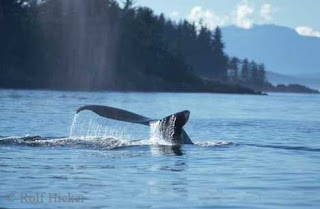Daylight & Darkness in Alaska
From mid May to August, many Alaskans live in near constant daylight. When we lived in Fort Wainwright, we used to use black curtains to keep that sunlight out at night.
This phenomenon, known as the Midnight Sun, reaches as far south as Fairbanks and Anchorage.
Every year Fairbanks has a run called the Midnight Sun Run. The run begins at 10 pm and finishes once everyone completes 6.2 miles. It was such a fun run! All the locals would gather and cheer you on & have water, powerade & fruit stands for you on the way!
As far as darkness goes in Alaska, at the very top of the state, there is a two-month winter period in which the sun doesn't rise. But that's the extreme, and winter's long nights get shorter the farther south you are in Alaska.
The winter's could seem gloomy, but there's fun things to do in the winter too. We attended an ice sculpture event where you can walk into houses made out of ice, sit on ice unicorns and even go on ice slides! You must take caution and wear the right clothing because colder seasons, can increase the danger of frostbite and hypothermia at low temperatures!
Alaska Snowfall Records!
Thompson Pass, a popular extreme ski and snowboard area north of Valdez, once received a record 974.5" of snow during the winter of 1952-1953.Thompson Pass recorded 62" of snow during one single 24 hour period in December, 1955. In February of
The deepest recorded snow pack in Alaska, and the deepest in all of North America, occurred at Wolverine Glacier on the Kenai Peninsula during the winter of 1976-1977. The depth was 356". That's packed, condensed snow. Almost 30 feet deep!
Barrow, in the dry north, received a record minimum amount of snow during the winter of 1935-1936 of only 3".
Montague Island in 1976 received a record 332.29" of precipitation. That's almost an inch of rain per day!
Barrow received only 1.61" of precipitation during all of 1935.
Alaska stores an immense amount of fresh water in its glaciers. An amazing 75% of the world's fresh water is held in glaciers worldwide and Alaska holds more than its fair share.
Alaska has more than 5,000 glaciers, covering in excess of 100,000 square miles. Alaska has more glaciers than the entire rest of the world combined, excluding the ice fields of Antarctica and Greenland.
Alaska really is a memorable place to visit!

No comments:
Post a Comment